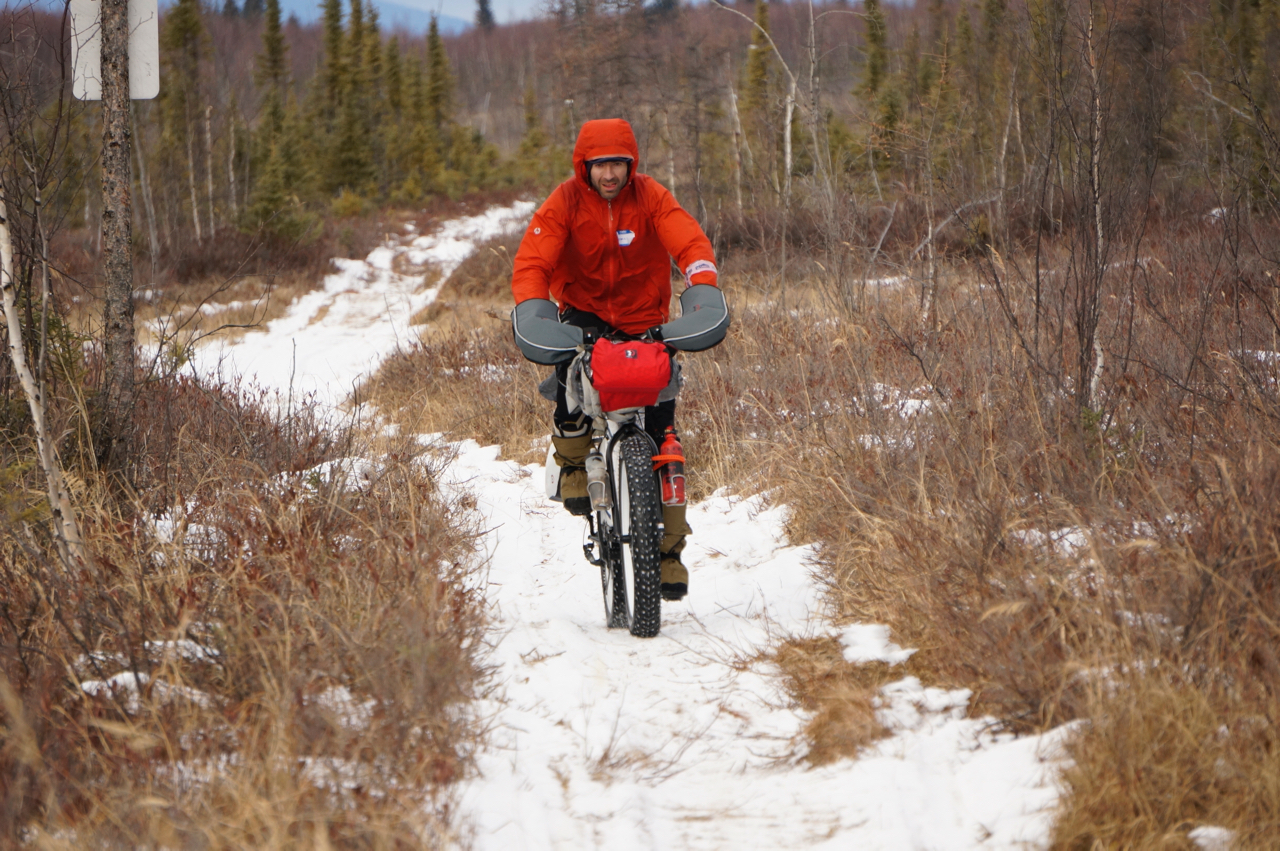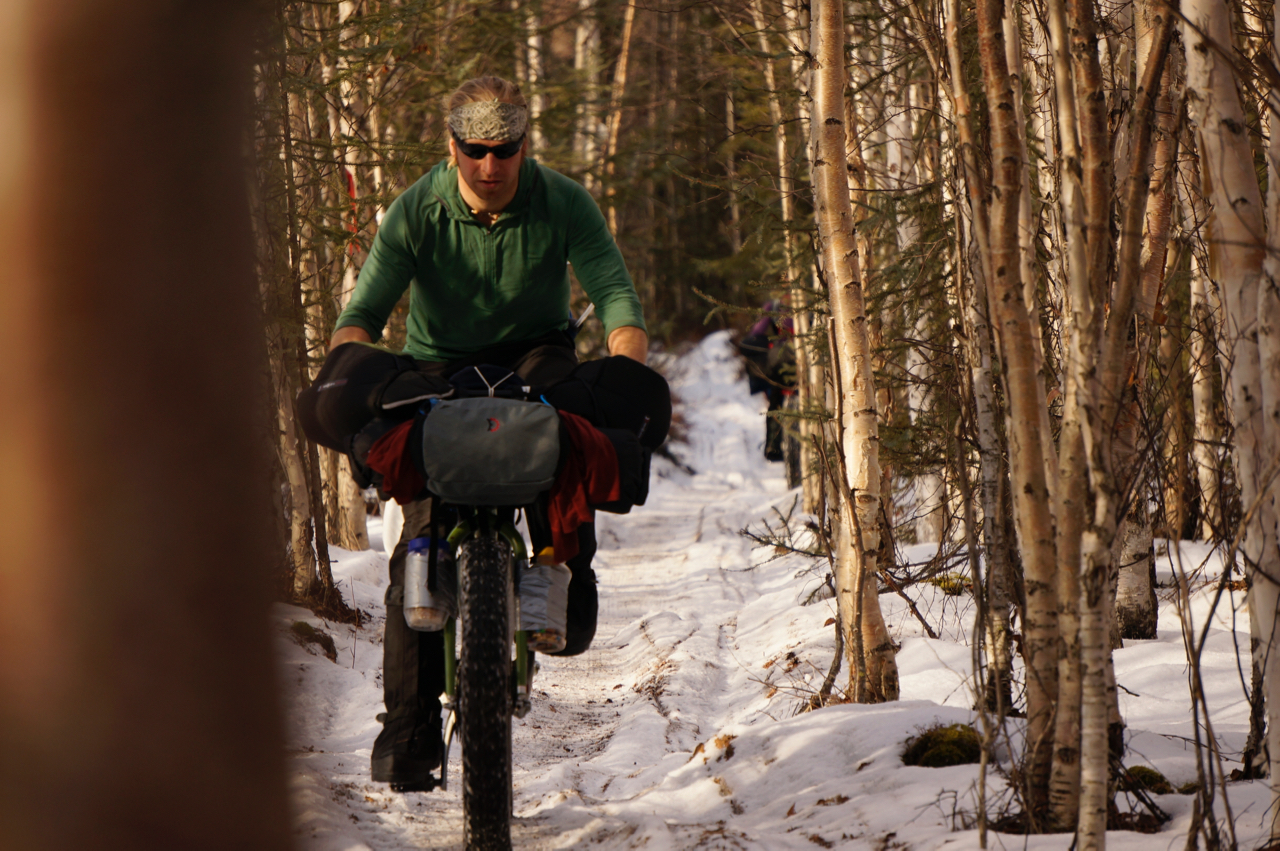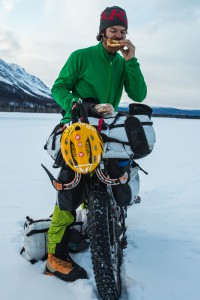Blog
stories • happenings • adventures
Whether you’ve been winter riding for a decade, or are braving your first cold snap in the saddle- there is one thing we all have to deal with, it’s keeping our digits from freezing. If you’ve come back from a ride with cold hands and first thought, “I need to buy new ____” You’re only thinking of one part in a much bigger picture of ergonomics and circulation to your hands. So before you try to buy your way to warmth let’s go through some simple things you can do to keep those fingers from going numb, or worse.

1. Comfortable bike geometry
Simply put – your hands should be comfortable on the bars and not go numb through regular riding, if they are, your bike positioning is causing bad circulation and possibly putting undue pressure on your wrist and hand nerves which will lead to numbness and poor blood flow. Bikes setup with aggressive XC or racing geometry should be suspect! The solution is easy – relax everything – raise up your cockpit, use bars with a minimum of 17 degrees of sweep and get comfortable ergo-grips. With less pressure on your hands to start with, you’ll have better blood flow and that equals warmth.

Blue foam also comes in pink as shown in this “two-holer” outhouse. Riding bikes is more fun with friends and so is….
2. Insulate your cockpit
If you’ve ever used an outhouse in the winter with a blue board cutout, you’ll know where I’m going with this… Aluminum bars, levers and hard rubber grips are your enemy. Cold is easily conducted through your bars and controls to your body. The solution just takes a bit of effort to pay huge dividends in warmth. The best thing you can do is wrap your grips with foam or cork (road bike) bar tape. Carbon bars also help as they conduct minimal heat. If you don’t have carbon brake levers, lizard skins sells tiny neoprene lever sleeves, or wrap your levers with Hockey tape. Adding a little bit of insulation here to combat the conductive heat loss is more effective than insulation added by pogies

High Sweep bars, Ergo grips wrapped in cheap bar tape. Note covered brake lever too.
3. Start with a warm bike
This one is obvious, but easy to get careless with. It’s a lot easier to keep something warm, than to warm it up. Keep your bike in your garage or in a warm place until you’re ready to jump on the saddle. Don’t let it sit outside for 10 minutes while you finish getting geared up. Obviously if you’re driving to a trail head you can’t avoid this, but any measures you take will help.
4. Have a simple hand ware strategy
Ideally, you’ll be able to ride bare handed inside your pogies, if you need to, add a pair of simple fleece liner gloves. Inside pogies, gloves do not need any kind of outer shell, the extra material reduces breath-ability and increases drying time. When you’re out on a long ride (especially in subzero temps) there will be a point where your hands will get cold no matter what you’ve done. For this, you should pack a “bailout” pair of lightweight mitts to make it through that big down hill, or after you fix your frozen derailleur. These mitts should again be fleece, but have also had good luck with the liners from big mountaineering mitts with the super light taffeta shells. The liners from BD Mercury Mitt’s work very well as they have an optional trigger finger for your brake levers. What you don’t need is a bunch of leather and big gauntlets. When you swap out to the bail out mitts, put your thin gloves close to your body so the moisture in them does not freeze and possibly dries out a bit. Swap out for the lighter pair as soon as you warm up again to keep the bailout mitts dry and sweat free for the next time.
5. Vent
Your wrists and forearms are a major zone for thermo-regulation. Wear clothing than you can easily pull up to your elbows to dump heat when you need to on climbs. With exposed arms, you should easily keep your hands from overheating inside pogies. Forearms and wrists are prone to sweating, while we’re not going to cover layering here it’s a good idea to avoid thin long sleeve wool or synthetic layers here as our experience has been that the forearms get damp wet with sweat easily and can freeze while you’re wearing them then boom – cold hands. You’re better off using thin stretchy fleece that does not absorb moisture in the first place. If the weather calls for a shell of some sort, make sure you still are able to vent your arms.

6. Recognize who you are and prepare accordingly
A big guy who is warm “no matter what” is going to have a lot easier time keeping their hands warm compared to a petite woman with Raynaud’s syndrome. In the case of the latter, you’ll have to pull out all the stops to stay happy. There’s no shame in using Little Hotties.
7. Stay hydrated and fed
Getting dehydrated is the main cause of frostbite. Have a winter hydration system (like ours!) that you can easily rely on to stay hydrated. Bonking on long winter rides also has far worse consequences than in summer time. Don’t leave the house without some snacks in the bag.

Photo credit: Andrew Burr
8. Get good pogies
Pogies have two main jobs – they block the wind and insulate. For temps above zero you can get by with pretty minimal insulation ( if you follow everything else on this list). When you start getting well into the negatives, you’ll need some puff to combat the thermal gradient.
We make two types, Expedition and Williwaw pogies. Williwaw Pogies are recommended for temperatures 0 to 25F. Expedition Pogies (coming back for winter 2021!) are fully featured for temps in the teens (with liner removed) and down to -50F with the liners.
What did we miss? Got something to add? Email us at info@revelatedesigns.com. Happy trails!
